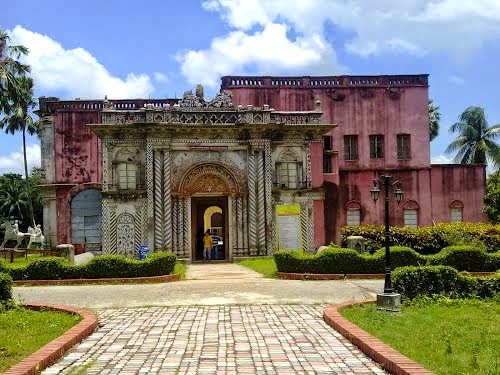Area of Gazipur Safari Park:
The Park is in Gazipur area which is only close to Dhaka city. At the outset, you need to go to Gazipur Chourasta. At that point go ahead along the Mymensingh street and come to Bagher Bazar. The separation in the middle of Dhaka and Bagher Bazar of Gazipur is forty kilometers. After that you need to pick the way of west side. You need to utilize rickshaw or CNG as transports to reach at the recreation center. Bangabandhu Safari Park is three kilometers far from that place.Transport admission from Dhaka to Bagher Bazar:
Per individual TK 50(normal), TK 80(sitting administration)Auto rickshaw admission from Bagher Bazar to Safari Park: Per individual TK 15
Passage and going to cost of Gazipur Safari Park
Passage charge: TK 50/for every grown-up
For Kid: TK 20
Outside guests: $5 or same measure of Bangladeshi money (TK 400)
Sustenance: Inside park (light nourishment accessible)
Safari by AC Bus for Adult: 100 TkFor Kids: 50 Tk
(The transport will take you into the Lion and Tigers region. Don't stress over your wellbeing. You will be completely secured)
Living with Bird: 10 Tk
Living in the Jungle: 10 TK
Oar Boat riding: 50 TK
Trip cost from Educational Institutions in Gazipur Safari Par:
Gathering size 40 to 100: TK 400Gathering size more than 100: TK 800
*you need to take progress consent through separate instructive organization to benefit of this concession.
Going time of Gazipur Safari Park:
Bangabandhu Sheik Mujib Safari Park is open from 9 AM to nightfall. Presently, the recreation center is open for regular.Nourishment Arrangement in Gazipur Safari Par:
Outside nourishment are not permitted. You can have your nourishment from "Tiger Restaurant" or "Lion Restaurant" inside Bangabandhu Sheik Mujib Safari Park.Lunch: 160 Tk ( Chicken Birany)
You may take or change your sustenance with additional installment.
Transports' stopping expense in Gazipur Safari Park
For every Bus/Truck: TK 200For every Minibus/Microbus: TK 100
For every Car/Jeep: TK 60
For every Auto rickshaw: TK 20
Motorbikes or bikes are not permitted to stop.
*** The measure of cash may be minimal changed.
Within Gazipur Safari Par:
In the wake of getting inside the recreation center, you will see tiger, lion, kangaroo and even dinosaur. Anyway these are not alive. These creatures are figures in fact for respecting the guests. The entire park is comprise of around 4000 sections of land of area. At present, 31 nearby and ,universal types of creatures are seen here.Tiger Restaurant of Gazipur Safari Park:
You can begin your meeting with "Tiger Restaurant". It is an enormous and safe restaurant encompassed with glasses so you can see the thundering tigers and take espresso or tea. The specialists of the recreation center can call the tigers and they react to him. Your inclination will be that you are viewing National Geographic or Animal Planet channel. After that you can begin chatting with utilizing microbus.Kingdom of Lions in Gazipur Safari Par:
Presently, go to the kingdom of lions. You can converse with them as you like. However never attempt to open the window of the microbus. On the off chance that you see white lion, then you will be fortunate enough. Truth be told, the lions move with vanity.Go places with your vehicle to see more. You will see bear, deer, zebra, African wildebeest and the sky is the limit from there. The elephants are delightful. They will salute you as per the request of specialist of the recreation center.
You can watch giraffes going to closer to them. Don't aggravate them and take a few snaps. You need to utilize transport for moving and going by a few regions. You ought to walk viewing alternate territories.
You will be upbeat seeing macao winged animals. On the off chance that you wish, you can bring a snap with this macao continuing your shoulder. At the same time, keep safe your ears. Light black parrots are truly alluring and delightful.
Extravagant Duck Garden of Gazipur Safari Park:
An alternate extraordinary zone of Bangabandhu Sheik Mujib Safari Park is Fancy Ducks Garden. You will see a lake here. Get on a vessel and watch enormous dark swans, white swans and so on. Attempt to take a gander at the excellence of different sorts of feathered creatures.Always remember to visit the zones of crocodile, vulture, emu, ostrich and so on. Make a visit to see python and different reptiles. It will be pleasant in the event that you see peacock. The two lakes and the other watery zones are awesome to delight in for the travelers.
Elephant riding in Gazipur Safari Par:
In the event that you come to Bangabandhu Sheik Mujib Safari Park, then you ought to take a risk of elephant riding. Never miss it. I trust it will amuse you. The guardian of the elephant will help you to have this opportunity.Nature History Museum of Gazipur Safari Park:
Example and stuffing of around 2000 species are kept here. The power has constructed a herbarium of around 300 sorts of trees. The sightseers, the understudies and the analysts can acquire colossal learning from this gallery.Directions to follow in Gazipur Safari Par:
1. Toss any sort of wastage in the dustbin.2. Don't make a commotion.
3. Abstain from offering nourishment to creatures.
4. Don't tease the creatures.
5. To utilize the rest house, take consent ahead of time.
6. Park your vehicle in a trained manner.








.jpg)








